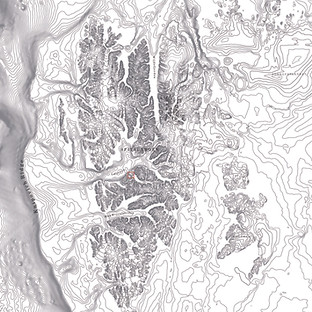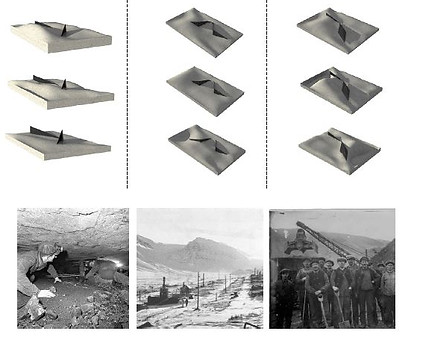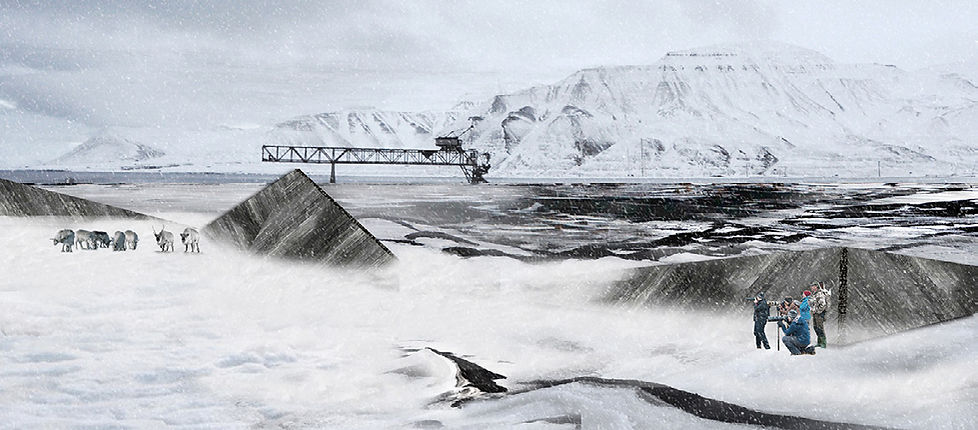Coalscape
- Memory of Time
The project is aimed to reveal the aesthetic process of landscape formation in Hotellneset, a place used for coal storage for over100 years.
The site overlap by different geology layers pile up by several human activities through times. Wind , snow comes and go, vegetation grow and die , but coal remain
The concept is aim to embody the special environment aesthetics through small inventions which build from exsisting material - a coal wall, it lead topography change with different natural phenomenon, such as wind, fog and snow , for it to guide people to feel and experience the history path and time.
Eventually Coal wall will collapse through time , erosion by wind flow with water. it is life cycle of landscape ,a layer of time.
Longyearbyen
It is a small town contain 2000 people, with one airport , one commercial port Bykaia , one industrial
port Kullkaia ,9 different mines , one power plant use coal energy ,one uninversity , one supermarket
and 500 houses .
The Main Industrial
From 1903 , the main activity in longyearbyen is the coal mining, there are 9 different mines in town ,
it have 70,000 tons of coal annually ,70% transport out to the world and 30% of it stay in the island to
generate power for electracity.
An abandoned mine on the cliff for 60 years.


Coal is the fossil of vegetation
There are four main phases that coal goes throgh before it is considered coal : Peat - Lingnite - Bitumen - Arthraite.
Because of the plate tectonics, billion years ago , svalbard was located in tropical zone which vegetation grow well and rapidly so the geology contain numerous of vegetation's fossil, with the low temperature of the climate up on Arctic it form the best quality of coal in the world now.
A prehistoric fossilised forest that helped trigger a dramatic change in the Earth's climate around 380 million years ago has been discovered ,Scientists found the preserved tree trunks and stumps, still where they had been rooted in the ground, on the island of Svalbard in Norway.
At the time, during the late Devonian period, Svalbard would have been close to the equator.It is thought sediment from a nearby lake swamped the trees, killing them but then helping to fossilise them as it was transformed into rock over millions of years.



















